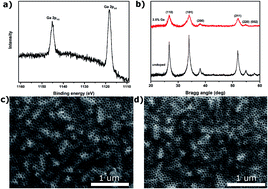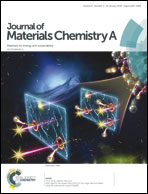A Ga-doped SnO2 mesoporous contact for UV stable highly efficient perovskite solar cells†
Abstract
Increasing the stability of perovskite solar cells is a major challenge for commercialization. The highest efficiencies so far have been achieved in perovskite solar cells employing mesoporous TiO2 (m-TiO2). One of the major causes of performance loss in these m-TiO2-based perovskite solar cells is induced by UV-radiation. This UV instability can be solved by replacing TiO2 with SnO2; thus developing a mesoporous SnO2 (m-SnO2) perovskite solar cell is a promising approach to maximise efficiency and stability. However, the performance of mesoporous SnO2 (m-SnO2) perovskite solar cells has so far not been able to rival the performance of TiO2 based perovskite solar cells. In this study, for the first time, high-efficiency m-SnO2 perovskite solar cells are fabricated, by doping SnO2 with gallium, yielding devices that can compete with TiO2 based devices in terms of performance. We found that gallium doping severely decreases the trap state density in SnO2, leading to a lower recombination rate. This, in turn, leads to an increased open circuit potential and fill factor, yielding a stabilised power conversion efficiency of 16.4%. The importance of high-efficiency m-SnO2 based perovskite solar cells is underlined by stability data, showing a marked increase in stability under full solar spectrum illumination.



 Please wait while we load your content...
Please wait while we load your content...